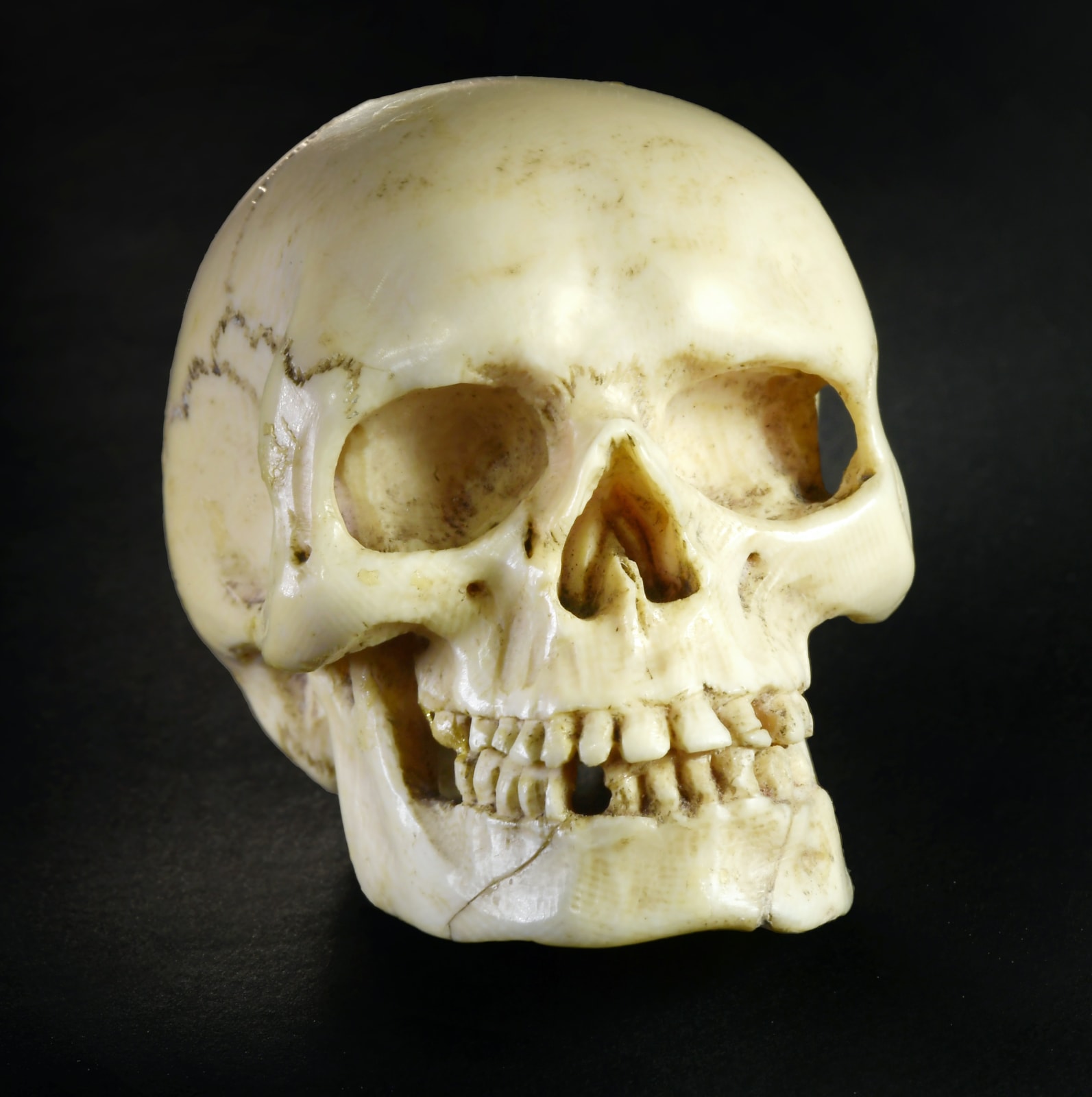Memento Mori: A German 17th-century Ivory Skull, ca. 1650
Macabre? Sure! But also a gorgeously carved tiny work of art, measuring not even two inches in height. It is comforting to imagine how it must have been contemplated by some humanist collector over 350 years ago, perhaps even been carried around as a constant reminder of the fleeting nature of earthly life.
"Memento mori" - "Remember that you [have to] die". So goes the saying, which has been repeated and rephrased in one form or another since antiquity, from the Stoics to Camus and Sartre. Epictetus (1st-2nd c. AD) told his studens to remind themselves they were mortal; the Christian writer Tertullian (2nd c. AD) wrote - perhaps apocryphically - that in victorious processions a slave stood behind the Imperator, whispering "Respice post te. Hominem te memento." ("Look behind you [to the time after your death] and remember you're [only] a man.") into the victor's ear.
With the ascent of Christianity in Europe, and its emphasis on heaven, hell and salvation, the expression memento mori - a moralizing counterpart to the more hedonistic nunc est bibendum of classical antiquity - came into use. As earthly pleasures and achievements are but empty and fleeting, better to focus on the afterlife and one's immortal soul.
Memento mori soon became an important topos in sculpture and painting, with so-called vanitas (from the Latin vanus, "empty") artworks symbolizing the transience of life and the certainty of death quickly appearing in tombs and churches. Throughout the middle ages and the renaissance the genre was mostly confined to funerary monuments; from the sixteenth century onwards however, vanity art started to appear in private homes as well. It took, for example, the form of vanitas still lifes: paintings juxtaposing ephemeral things such as wealth and beauty with the certainty of decay and death.
The present work, a small carved ivory skull, was certainly intended for private use. The skull symbolized the certainty of death, although there was of course also an aesthetic and decorative element to objects like these. Ironically, as they were intended to show the vanity of earthly possessions, these were luxury objects, collected for cabinets of curiosity by wealthy men, small enough even to carry around as a reminder that one day they, too, would come to pass.
Provenance
Private collection, Antwerp.
